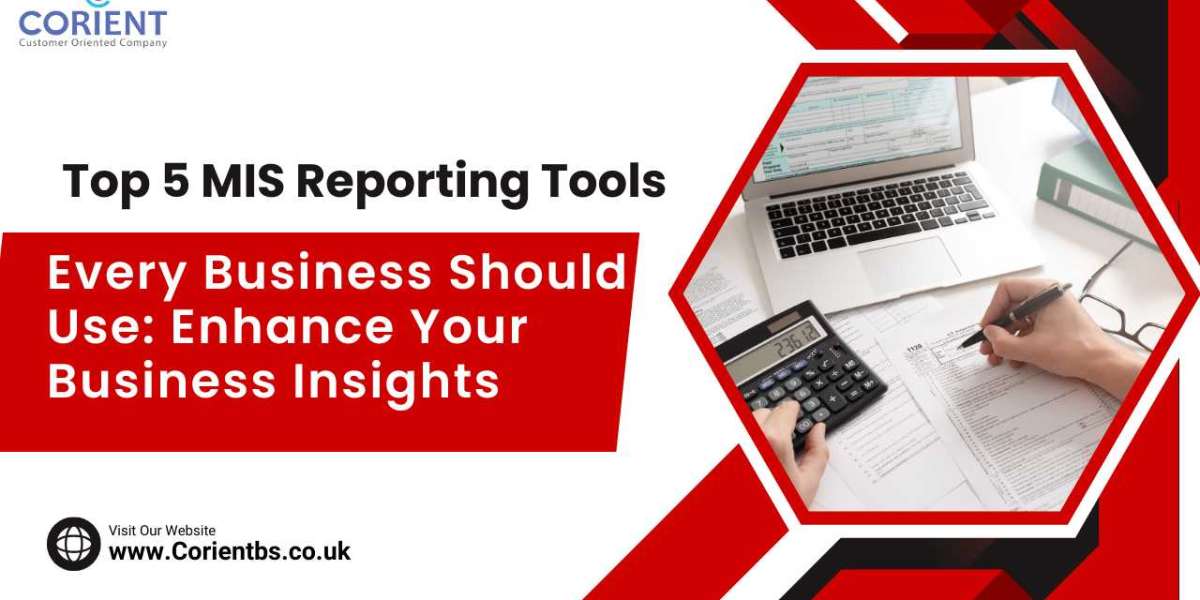In today's data-driven world, Management Information Systems (MIS) reporting tools are indispensable for businesses to streamline their operations and make informed decisions. These tools help in collecting, processing, and presenting data in a way that makes it easy to understand and act upon. Here, we will explore the top 5 MIS reporting tools that every business should consider incorporating into their operations.
1. Microsoft Power BI
Overview:
Microsoft Power BI is a powerful data visualization tool that allows businesses to transform raw data into meaningful insights through interactive dashboards and reports. It integrates seamlessly with a variety of data sources, including Excel, SQL Server, and cloud-based databases.
Features:
Interactive Dashboards: Power BI provides a user-friendly interface with drag-and-drop features to create interactive and visually appealing dashboards.
Real-Time Data: The tool supports real-time data updates, ensuring that your reports always reflect the most current information.
Advanced Analytics: With built-in AI capabilities, Power BI can perform complex data analysis and provide predictive insights.
Mobile Access: The mobile app allows users to access reports and dashboards on the go, ensuring that decision-makers have the information they need at their fingertips.
Benefits:
Ease of Use: Power BI’s intuitive interface makes it accessible to users with varying technical expertise.
Scalability: Suitable for businesses of all sizes, from small startups to large enterprises.
Cost-Effective: Offers a range of pricing options, including a free version with basic features.
2. Tableau
Overview:
Tableau is another leading MIS reporting tool known for its robust data visualization capabilities. It helps businesses see and understand their data through intuitive and interactive dashboards.
Features:
Data Blending: Tableau can blend data from multiple sources, providing a comprehensive view of business performance.
Drag-and-Drop Interface: Users can easily create complex visualizations without any coding knowledge.
Real-Time Collaboration: Tableau supports collaboration across teams, allowing multiple users to work on the same dashboard simultaneously.
Extensive Library of Visualizations: Offers a wide range of chart types, maps, and other visual elements to represent data effectively.
Benefits:
Powerful Analytics: Capable of handling large datasets and performing advanced analytics.
Customizable Dashboards: Users can create tailored dashboards to meet specific business needs.
Community Support: Tableau has a large and active user community that shares resources, tips, and best practices.
3. SAP Crystal Reports
Overview:
SAP Crystal Reports is a widely used reporting tool that enables businesses to design and generate reports from various data sources. It is particularly popular for its robust reporting capabilities and integration with SAP ERP systems.
Features:
Flexible Reporting: Allows users to create highly formatted reports with detailed data analysis.
Integration with Multiple Data Sources: Supports data from SQL databases, Excel spreadsheets, and other enterprise applications.
Report Scheduling: Users can schedule reports to run at specific times and automatically distribute them via email or other methods.
Interactive Reports: Provides interactive features such as drill-down and filtering to explore data in more detail.
Benefits:
Detailed Reporting: Ideal for businesses that require detailed and precise reporting.
Automation: Saves time by automating report generation and distribution.
Wide Adoption: Trusted by many large organizations for its reliability and performance.
4. Zoho Analytics
Overview:
Zoho Analytics is a self-service business intelligence and analytics platform that allows users to create insightful reports and dashboards. It is part of the Zoho suite of business applications, making it a good choice for businesses already using other Zoho products.
Features:
Data Connectivity: Connects to a wide range of data sources, including databases, cloud storage, and online applications.
AI-Powered Insights: Leverages artificial intelligence to provide smart insights and automate data analysis.
Collaboration: Facilitates collaboration by allowing users to share reports and dashboards with team members.
Customization: Users can customize reports and dashboards to meet their specific needs.
Benefits:
Ease of Integration: Seamlessly integrates with other Zoho applications and third-party tools.
User-Friendly: Designed to be accessible to non-technical users with its simple drag-and-drop interface.
Cost-Effective: Offers competitive pricing with a free tier for small businesses.
5. Qlik Sense
Overview:
Qlik Sense is a modern data analytics platform that empowers users to explore and analyze data freely. It is known for its associative data model, which allows users to explore data relationships without predefined queries.
Features:
Associative Data Model: Enables users to explore data in any direction and uncover hidden insights.
Self-Service Analytics: Provides a user-friendly interface for creating personalized reports and dashboards.
Data Storytelling: Users can create compelling data stories by combining visualizations and narrative elements.
Scalability: Designed to handle large datasets and scale with the growth of the business.
Benefits:
Flexible Data Exploration: This feature allows users to dive deep into data and uncover insights that may be missed with traditional BI tools.
Interactive Dashboards: Provides highly interactive and customizable dashboards.
Enterprise-Ready: Suitable for large organizations with complex data analysis needs.
Conclusion
Choosing the right MIS reporting tool is crucial for businesses leveraging their data for strategic decision-making. Microsoft Power BI, Tableau, SAP Crystal Reports, Zoho Analytics, and Qlik Sense each offer unique features and benefits that can cater to different business needs. By implementing these tools, businesses can enhance their data analysis capabilities, improve operational efficiency, and drive better business outcomes.
When selecting an MIS reporting tool, consider factors such as ease of use, integration capabilities, scalability, and cost to find the best fit for your organization. With the right tool, your outsourced payroll business can transform data into actionable insights and stay ahead in the competitive landscape.
-
 How to Maximize the Benefits of a Merchant Cash Advance
By Jack Saimon
How to Maximize the Benefits of a Merchant Cash Advance
By Jack Saimon -
 Myth or Fact : We marry a version of our mother or father
Myth or Fact : We marry a version of our mother or father
-
 Powder Mountain: The Ultimate Destination for Celebrities and Families Alike
Powder Mountain: The Ultimate Destination for Celebrities and Families Alike
-
 HARVESTING HOPE and Building a Sustainable Future With Water Harvesting Tanks
HARVESTING HOPE and Building a Sustainable Future With Water Harvesting Tanks
-
 Water crisis in Kenya
Water crisis in Kenya



